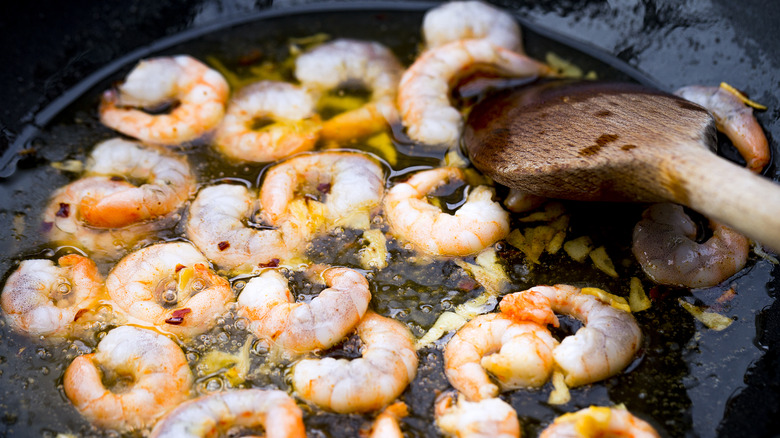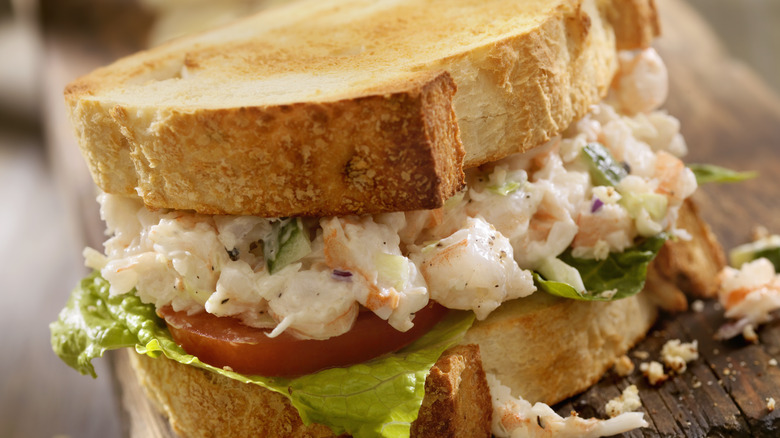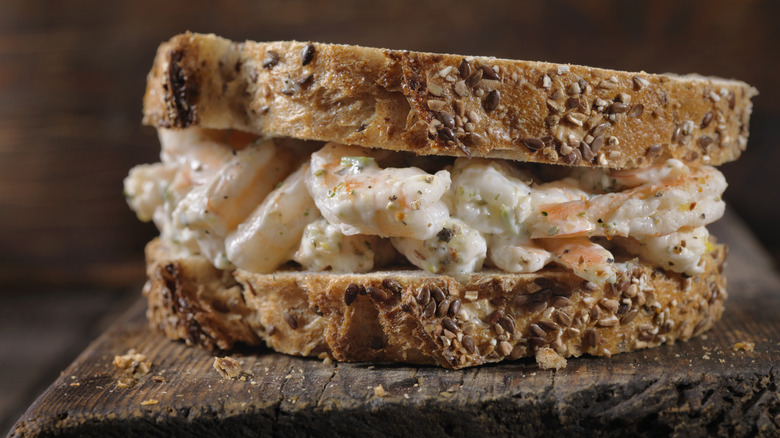Pro-Tips For How To Save Your Overcooked Seafood
It doesn't matter how careful you are or how many times you've cooked any particular dish before, it's still easy to overcook something. When that happens to seafood, it's a pretty awful feeling. If you were looking forward to a delicious meal of light, flaky fish or succulent shrimp, doesn't overcooking them mean that ship has sailed? Not always.
The Daily Meal reached out to chef Michelle Wallace, the founder of b'tween sandwich co. While she did confirm that overcooking fish meant that your options for serving up a delicious meal were limited, all might not be lost. "It's very tough to come back from overcooked fish [or] shellfish," Wallace told us. "It becomes rubbery and dry — and that is not good eats." However, that doesn't mean it's a complete lost cause, and Wallace added, "There are definitely some things that you can do to try and save your overcooked fish and shellfish. ... turning your fish/shellfish into a fish salad is probably the best, most effective way."
That actually doesn't sound too bad, does it? Wallace gave us a few additional tips on how to turn that tough and rubbery seafood into a meal that you'll actually want to eat. If you're willing to get a little flexible with your food, then we have some seriously good news for you.
Salvaging overcooked fish and shellfish is all about texture
Getting perfectly cooked seafood — particularly shrimp — means carefully keeping an eye on what you're doing, but let's be honest. The world isn't perfect, distractions happen, and frankly, there are some days that just feel like one giant distraction. Take your shrimp off the heat too soon and they're likely to be mushy. Wait just a little bit too long, and they're going to be equally terrible in the other direction. However, Michelle Wallace's go-to idea offers up a glimmer of hope. She advises taking that fish salad and going just one step further: "Basically turning it into a fried shrimp salad po'boy."
And it makes sense, doesn't it? That approach gives you the chance to hide that not-so-delectable texture of seafood that's been cooked for too long. A truly great sandwich has all kinds of textures that come from crusty or soft bread, melty cheese or firm slices, raw veg and crunchy onions, or the soft creaminess of a fish salad.
The ingredients you use can help hide overcooked fish
Making a sandwich from overdone seafood doesn't mean just slathering on some mayo to try to hide that rubbery, dry texture and calling it a day. Michelle Wallace thinks you should start with adding sauce to the fish and "then build your sandwich with that. Using ingredients that can add moisture and flavor can also help save the sandwich ... such as red onions, pickles (of all types), and tomatoes."
There are plenty of seasonings you should be using in your tuna salad, and many will work wonderfully when added to the overcooked fish you're now going to be prepping for a sandwich. Wallace's advice to choose ingredients that increase moisture and flavor applies to countless options: Add a sweet relish or spicy mustard, a sprinkling of your favorite hot sauce, or a salty, briny dimension courtesy of some capers.
Instead of your standard mayo, try making your own tahini and using that, or whip up a horseradish and dill dip to use as a spread. A tzatziki sauce is another great option that brings a freshness and lightness along with the cucumber, dill, and garlic. You'll never waste — or struggle to eat — overcooked fish again.


